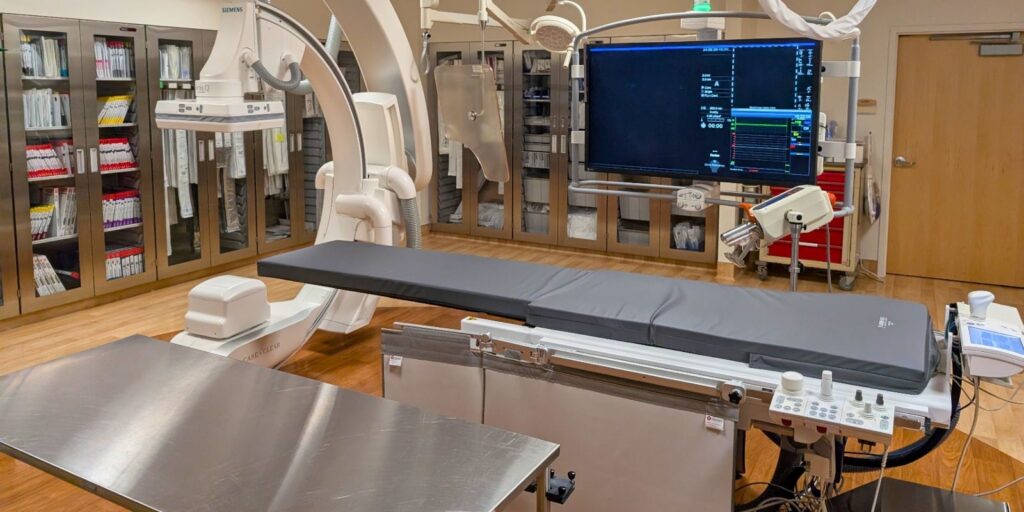Home > Cardiac Cath Lab

Cardiac Cath Lab
In rural Alaska, we understand the advantages of having medical services close to home. The expense, inconvenience, and sometimes inability to travel outside the peninsula are some of the biggest reasons that Central Peninsula Hospital, in affiliation with Alaska Heart & Vascular Institute, is proud to offer our community the services of a state-of-the-art Cardiac Cath Lab.
Contact Us with any questions:
Phone: (907) 714-5711
Fax: (907) 714-4910
What is Cardiac Catheterization?
Cardiac Catheterization is used to diagnose and treat cardiovascular disorders. During a catheterization, angiograms (X-ray images), pressure recordings, and other measurements help your cardiologist check for:
• Coronary Artery Disease (disease in the heart’s arteries).
• Valvular Heart Disease (disease in the heart’s valves).
• Congenital Heart Disease (heart disease you were born with).
• Other Conditions.
This is one of the most helpful procedures for giving your physician a clear picture of your heart’s overall health, and is a very helpful tool in determining a diagnosis.
How is it Performed?
A long, thin tube called a catheter is inserted in an artery or vein within your groin or arm, and then threaded through the blood vessels to your heart. Once the catheter is positioned, the pressure of the blood in various chambers of the heart can be measured, blood can be taken, and dye (radiographic contrast material) can be injected (a process called angiography) to allow X-ray visualization.
You will usually be awake during cardiac catheterization, but you will be given medications to help you relax. This method is called conscious sedation. Recovery time for a cardiac catheterization is quick, and there is low risk of complications.
What to Expect After Cardiac Catheterization?
You will enter a recovery room for a few hours. During this time:
- Pressure will be applied to the puncture site to stop any bleeding.
- If the procedure was done through your leg, you will be asked to keep your leg straight and will not be able to get out of bed for several hours.
- Your vital signs (blood pressure, heart beat etc) will be checked throughout your recovery.
- Although the recovery time is quick, you can expect to be in the hospital for the procedure anywhere from 4 to 6 hours.
Before you leave the hospital, you will receive written instructions about what to do at home.
Alaska Heart & Vascular Institute Interventional Cardiologists

Blake Charlton, MS, FACC, FSCAI

Thomas Kramer, MD, FACC

Seth Krauss, MD, FACC, FSCAI

Jonathan McDonagh, MD, FACC, FSCAI

Stanley Watkins, MD, MHS, FACC
For more information about services provided by this department please click here.